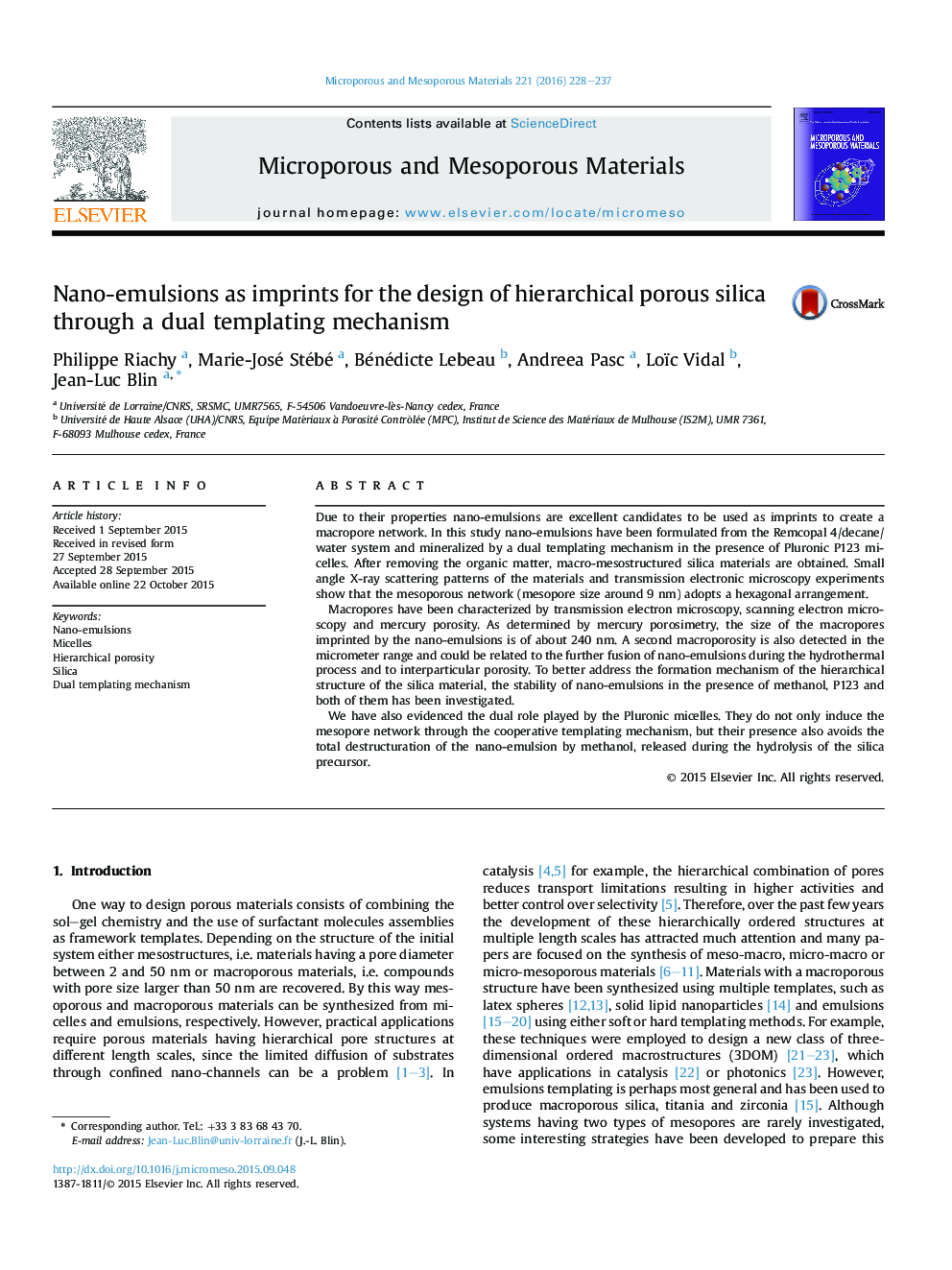| Article ID | Journal | Published Year | Pages | File Type |
|---|---|---|---|---|
| 72334 | Microporous and Mesoporous Materials | 2016 | 10 Pages |
•Hierarchical porous materials obtained by combining nano-emulsions and micelles.•Materials exhibit a hexagonally ordered mesopores of 9 nm and macropores of 240 nm.•P123 micelles induce the mesopore network via the cooperative templating mechanism.•P123 micelles prevent from the complete destructuration of nano-emulsions by methanol.
Due to their properties nano-emulsions are excellent candidates to be used as imprints to create a macropore network. In this study nano-emulsions have been formulated from the Remcopal 4/decane/water system and mineralized by a dual templating mechanism in the presence of Pluronic P123 micelles. After removing the organic matter, macro-mesostructured silica materials are obtained. Small angle X-ray scattering patterns of the materials and transmission electronic microscopy experiments show that the mesoporous network (mesopore size around 9 nm) adopts a hexagonal arrangement.Macropores have been characterized by transmission electron microscopy, scanning electron microscopy and mercury porosity. As determined by mercury porosimetry, the size of the macropores imprinted by the nano-emulsions is of about 240 nm. A second macroporosity is also detected in the micrometer range and could be related to the further fusion of nano-emulsions during the hydrothermal process and to interparticular porosity. To better address the formation mechanism of the hierarchical structure of the silica material, the stability of nano-emulsions in the presence of methanol, P123 and both of them has been investigated.We have also evidenced the dual role played by the Pluronic micelles. They do not only induce the mesopore network through the cooperative templating mechanism, but their presence also avoids the total destructuration of the nano-emulsion by methanol, released during the hydrolysis of the silica precursor.
Graphical abstractFigure optionsDownload full-size imageDownload as PowerPoint slide
